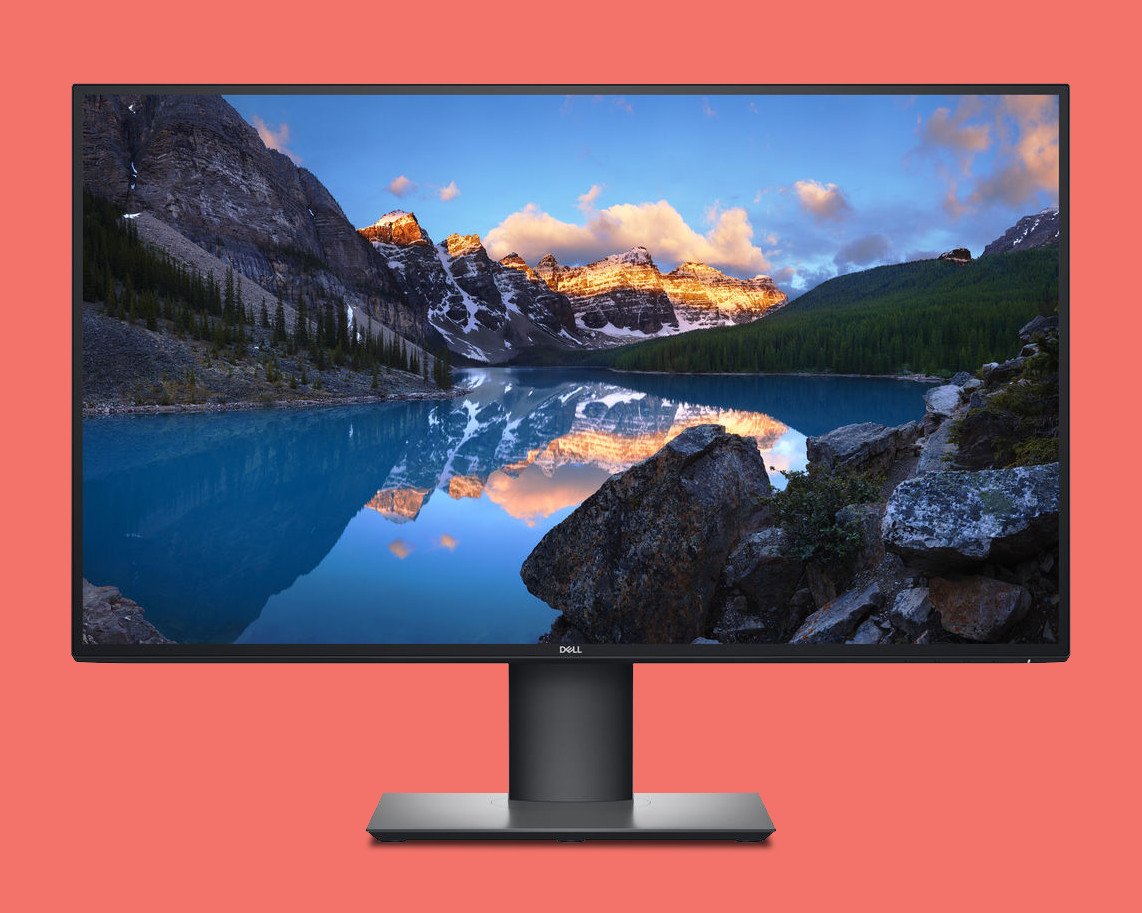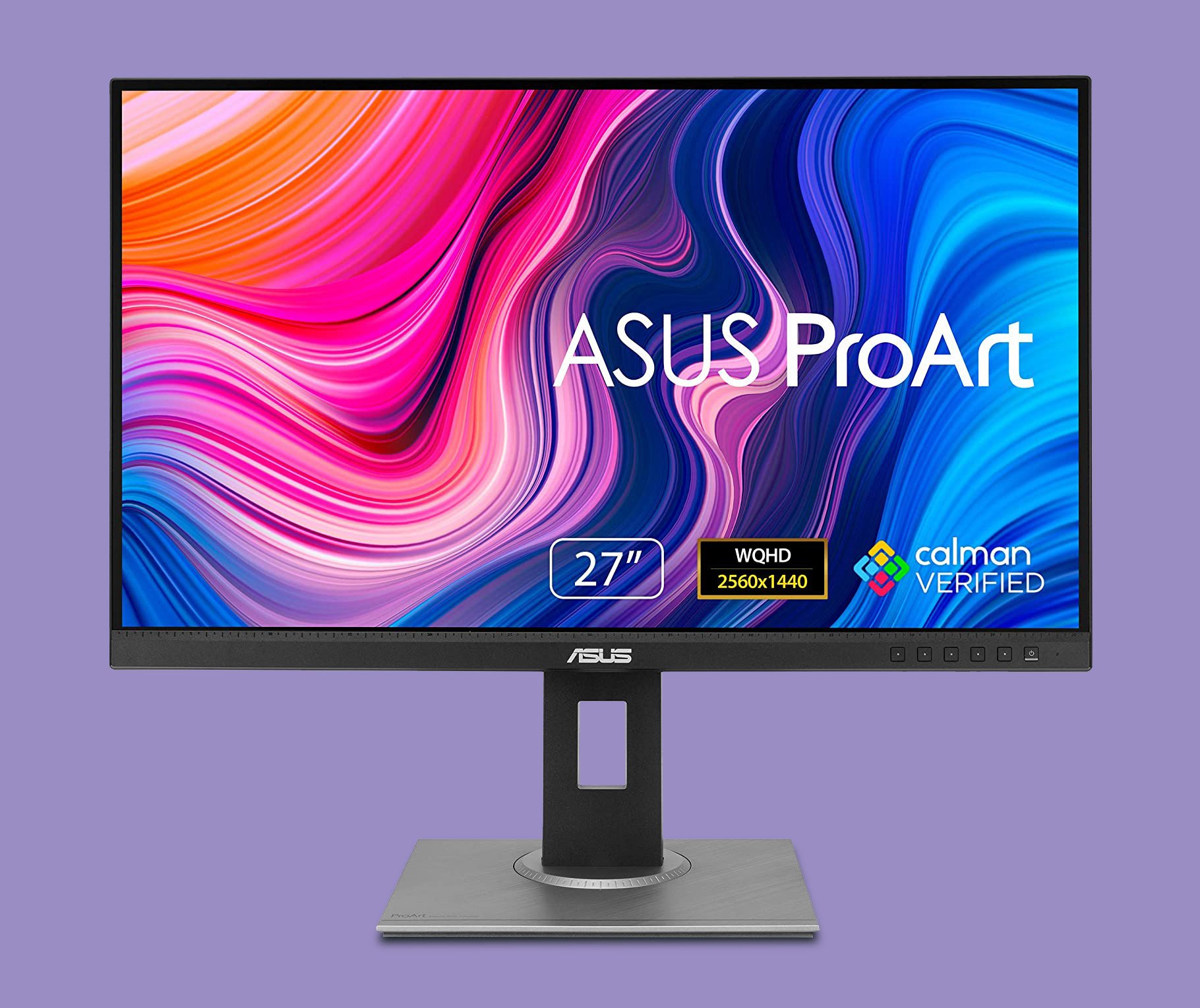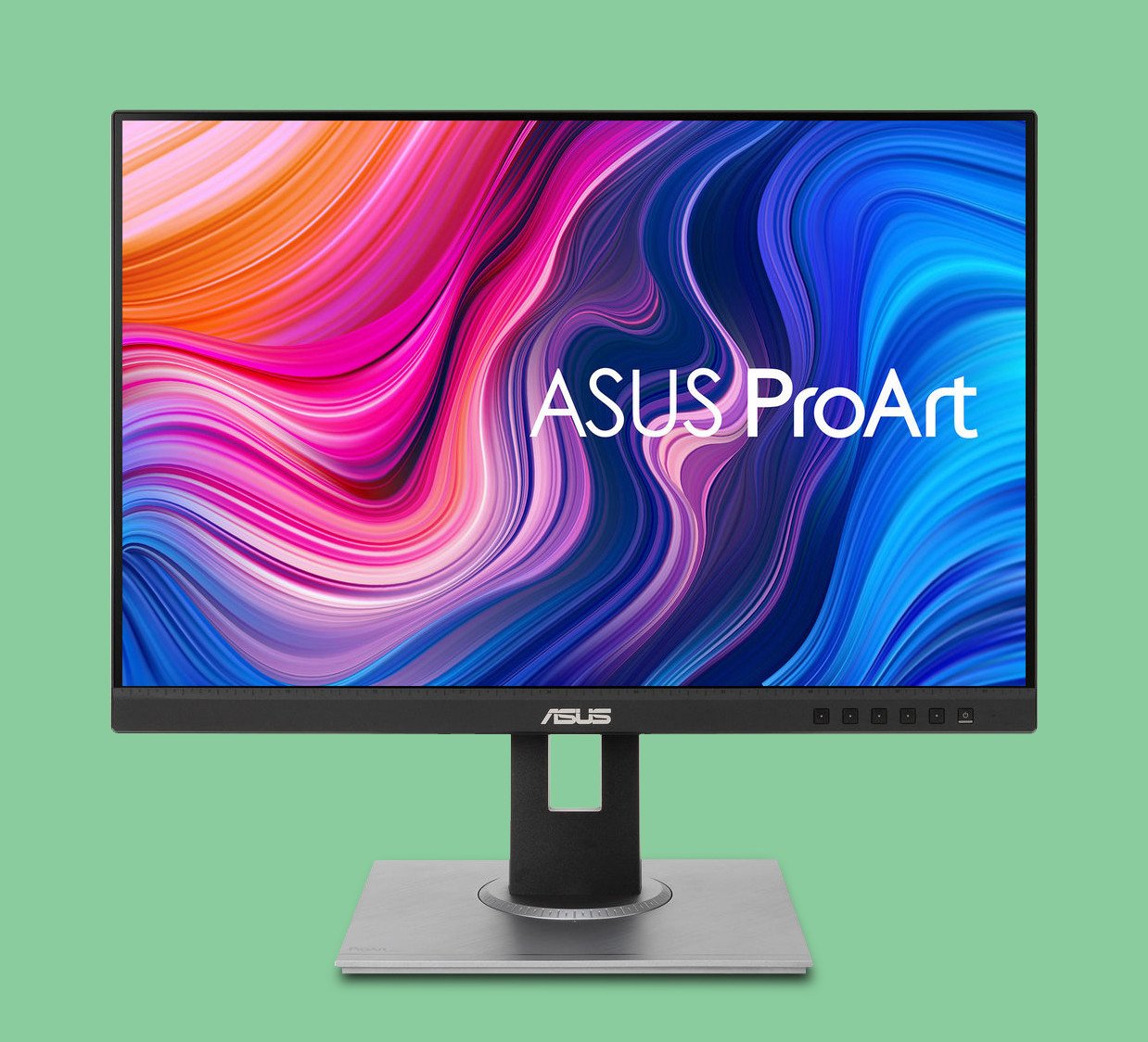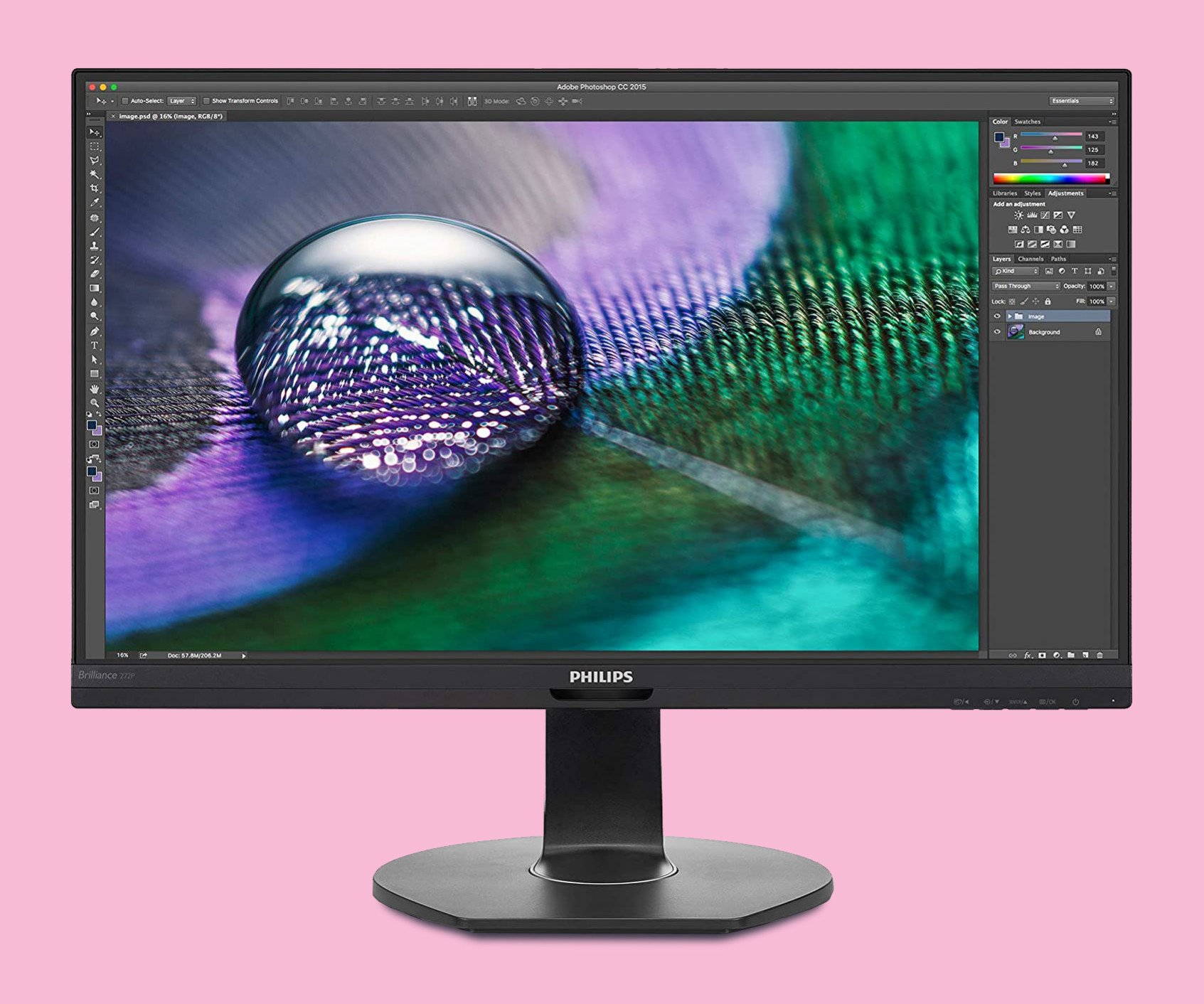How to choose the best monitor for photo editing in 2022
A good quality monitor is the heart of the digital darkroom and having accurate colors is important not only to serve as basis for our creative choices, but also to deliver files that will look good down the road in the hands of a client, on a magazine, advertising piece or viewed online.
Yes, I'm a color nerd, but I truly believe a good monitor empowers creativity and high quality work for any creative professional. It's hard to do great work if you can't see it right.
As important as this topic is, many of the monitor recommendations we find online are either outdated or focus on the wrong specifications. What matters for a gaming monitor, for example, is pretty much irrelevant for photography or design work and most recommendations are skewed by that.
If you're in a hurry, here are my top 3 color accurate monitors recommendations for photo editing, depending on the budget.
The best within reason: ASUS ProArt PA329C
The ASUS ProArt PA329C is the least expensive high end 32 inch 4K monitor designed specifically for photography and other fields that require color accuracy. It has a wide color gamut covering 100% of the AdobeRGB color space, 98% of DCI-P3 and offers professional features only seen on more expensive monitors, like panel uniformity compensation and the ability to save color profiles on the monitor, which comes handy for video users or apps that are not color managed.
Best value pick: Dell UltraSharp U2720Q
The Dell UltraSharp U2720Q has a 27 inch 4K wide gamut screen covering 95% of the DCI-P3 color space. It comes factory calibrated to a dE of less than 2 for accurate colors and uses a 10-bit LUT internally, so banding shouldn't be a problem. Great solid choice, even though it's not marketed specifically for photography.
Best budget alternative: ASUS ProArt PA278QV
The ASUS ProArt PA278QV is a real bargain. 27 inch, 2560 x 1440 pixel resolution, standard sRGB gamut and factory calibrated to under 2 dE. It has an 8-bit LUT – fine for a standard gamut display – and offers all the necessary hardware adjustments to get it into the best initial state possible for using a monitor calibration device. For example, individual RGB controls, gamma and white balance fine tuning.
What specs really matter?
The best monitors for photo editing are excellent in a few key metrics: resolution, color accuracy and gamut. The rest is pure marketing talk or irrelevant for this kind of usage.
Let's take a look at each of the specs that really matter.
Screen resolution
The higher the resolution, the more pixels will fit on the screen at 100% zoom. You can fit more work, see more details and everything looks crisp and sharp.
Always evaluate resolution and screen size together. A 27 inch 4K display is much sharper than a 42 inch one since it has the same amount of pixels on a smaller area.
High pixel density monitors look great, but keep in mind that the combination of high resolution and relatively small screen size can make user interface elements and text look tiny.
A way to work around that is by using some kind of scaling. MacOS and Windows 10 have different approaches for this, each with its own merits and shortcomings.
MacOS offers only resolution scaling, meaning that everything on the screen will be downscaled to the target resolution.
This process is good to keep all user interface items proportional and looking the same, despite the scaled resolution. On the other hand, uneven resolutions look blurred and, in my opinion, are not well suited for creative work as it introduces scaling artifacts. Those artifacts are particularly visible in fine lines and small text.
If you buy a monitor for a Mac thinking of using a scaled resolution, always try to keep scaling even. For example, 2:1 scaling where a 4K display behaves like a Full HD one that has half the number of pixels on each direction.
That's why Apple uses a 5K display and not a 4K one for the 27 inch iMac: it translates perfectly to a scaled resolution of 2560 x 1440 pixels, which happens to be the sweet spot in terms of readability for that monitor size. It's a shame that 5K monitors are so rare to find and generally a bad value.
Otherwise, avoid any kind of scaling or pick a display size that gives you a comfortable reading experience on its native resolution. For example, 4K resolution looks really tiny on a 27" monitor, but looks small yet readable on a 32" screen. Or use multiple displays and keep the higher resolution one dedicated to photo editing. Or maybe even use scaling for general computer usage and disable it while working on images.
Windows 10, on the other hand, offers UI scaling that doesn't mess with the actual display resolution, but instead adjusts the size of all text and user interface elements.
Perfect, right? Well, not so much in the real world. Not all Windows programs play well with UI scaling, specially those using old libraries or non-standard user interfaces.
As a general guideline, resolutions from 90 PPI to 120 PPI (pixels per inch) look readable for most users.
Popular monitor sizes and resolutions for photography
24 inch at 1920 x 1080 pixels (FullHD) = 92 PPI
24 inch at 3840 x 2160 pixels (4K) = 184 PPI or 92 PPI at 2:1 scaling
27 inch at 2560 x 1440 pixels = 109 PPI
32 inch at 3840 x 2160 pixels (4K) = 138 PPI. A little high, which means screen elements and user interface look small.
Some of the recommendations on this guide are 4K displays and focus only on photo editing, but keep this in mind if you need to use a single display for general computer usage.
Whenever possible we'll suggest alternatives that don't require scaling, but, generally speaking, technology follows market demand and some of the best deals right now are on 27 inch displays with 4K resolution. The mid to high end market has already transitioned completely to 4K in 2022.
Color accuracy
Thinking in terms of size and resolution helps narrow down the category of monitor we're looking for and to split the market into clear segments. But the most important monitor characteristic for photo editing isn't resolution, it's color accuracy and color gamut.
Color accuracy is the ability to reproduce a wide range of true to life colors that follow precisely the input signal sent by the computer graphics card.
Color accurate monitors are predictable and show little deviation in terms of color reproduction throughout the whole spectrum. This deviation is measured in dE – read as "delta E" or using the greek letter delta, ∆E. A dE difference under 3 is almost imperceptible to the human eye and generally considered to be color accurate enough.
Calibrating an inaccurate monitor generates a color profile with steep calibration curves that can cause banding on smooth gradients, similar to what happens when heavily editing a 8-bit per channel JPG image.
It's not possible to gauge color accuracy by looking at a spec sheet, but there are a few hints of a color accurate monitor. Look for monitors that are factory calibrated or that offer true hardware calibration.
What that means is that the manufacturer has checked and tuned color response individually for each unit at the factory, or – even better – offers a way to fine tune color reproduction in hardware at any time using a measurement device.
Is it still necessary to profile a factory calibrated monitor?
A factory calibrated display still needs to be profiled with a monitor calibration tool. That's necessary to create an ICC color profile describing how that particular hardware reproduces colors considering unit to unit deviation and the actual settings we choose, like brightness and color temperature. But, that said, a factory calibrated display is always a better starting point for the monitor calibrator to work.
Factory calibration, hardware calibration and color gamut presets, like Rec.709 or sRGB simulation modes, are more important for video, since some video editing apps are not fully color managed.
Color gamut
Color gamut describes the range of colors on the color spectrum that are visible to the human eye. In practical terms, it's the ability to display more saturated colors. A wide gamut monitor that covers a larger gamut can display more vibrant colors than a standard gamut sRGB one.
A good monitor for photo editing has a color gamut that is wide enough to encompass all the colors on the source files or simulate output devices, like inkjet printers, without having to map colors to a smaller gamut.
Gamut coverage is expressed relative to a known color space. For example, 99% of the DCI-P3 space. In terms of size, DCI-P3, AdobeRGB and Rec.2020, used for video editing, are wide gamuts, while sRGB, NTSC and Rec.709 are standard gamuts. A Dell U2720Q monitor, for example, covers 95% of the DCI-P3 color space.
Oversaturated colors? Color management to the rescue!
Keep in mind that having a wide color gamut monitor doesn't mean oversaturated colors. That's why color management is so important.
By knowing the color reproduction characteristics of a particular monitor, the operating system and any color managed apps can adjust color output to give a consistent representation on any device.
In practice, an image that fits on the small sRGB colorspace will look the same on standard or wide gamut displays, as long as both are profiled and we're using a color managed app.
On the other hand, a wide gamut image has to be remapped to fit a monitor with sRGB gamut and will look much less vibrant, since that display hardware is simply incapable of reproducing those colors.
Remapping images to fit on a smaller gamut – a process called gamut mapping – comes with its own tradeoffs and editing on a standard gamut display is often a limitation.
Why choose a wide gamut monitor
Modern digital cameras can generate files with colors well outside the standard sRGB color space. A wide gamut display is necessary to see those colors accurately.
Another use case is output device simulation. High quality inkjet printers have color gamuts much larger than the sRGB standard, as well as most newer mobiles devices. Apple has been pushing wide gamut screens for quite some time now by adopting the large DCI-P3 color space as target. A wide gamut display can give a more truthful simulation of those devices.
Other important specifications for high quality monitors
LUT: 10 bit or larger vs. 8 bit
All monitors use internally a look-up table, or LUT, to mathematically map the digital signal sent by the computer (input) to an actual color pixel value (output).
Less expensive monitors use 8-bit LUTs which can distinguish between approximately 16.77 million different colors. High end displays use 10-bit LUTs or even larger.
The practical difference is that higher bit LUTs can distinguish between more colors, helping to eliminate banding in fine gradients.
A 10-bit or larger LUT is specially welcome in wide gamut displays that can generate a broader number of colors. Wide gamut displays with 8-bit LUTs exhibit banding on gradients and that effect is particularly visible in grayscale and dark tones.
Some monitors use a technique called FRC, or frame rate control, to rapidly switch individual pixels between two colors and simulate a finer color transition. While that technically works, FRC introduces banding and other digital artifacts and doesn't replace the need for an internal LUT with 10-bit or higher precision.
Always try to get a 10-bit or higher monitor for the best image quality possible. Eizo has a page with in depth information about monitor look-up tables. ViewSonic also has an interesting article about this topic.
Some manufacturers don't specify LUT resolution directly, but as a number of theoretical color depth. For example, the Dell U2720Q monitor has a 1.07 billion colors rating, which translates to 10-bit LUT. A 12-bit LUT has a resolution of about 68 billion colors.
Matte screens
An under appreciated feature of high quality displays is the type of screen coating and finish.
Monitors with matte screens are less susceptible to room positioning and show less reflections and glare that can mess with our perception of colors. Some higher end monitors go even further by using a shading hood to protect the screen from reflections.
Glossy screens look better on the showroom and avoid that subtle coarse texture that matte screens have.
Whenever possible, choose a monitor with a matte screen or, at least, a good anti-glare treatment and position it in a way that avoids reflections from nearby windows or light sources.
This is, in my opinion, the biggest drawback of Apple monitors for color accurate work and photo editing. Outside of the crazy expensive Apple Pro Display XDR monitor (that has other limitations), all other Apple displays have shiny glass front surfaces.
What specs to ignore
Specs like response time, dynamic image enhancements, variable refresh rate, game modes, adaptive backlight dimming, etc, are useless to evaluate display quality and usually do more harm than good.
Contrast ratio is the measurement between the darkest black and the brightest white a monitor can reproduce. In theory, that could be a good indicator of monitor quality, but in practice there's no real standard for calculating contrast ratio and it became just another meaningless checkbox on the spec sheet.
There's absolutely no guarantee a monitor with a 2,000:1 contrast ratio is better than one with 1,200:1, just like a mobile phone camera can have the same amount of pixels as a full frame DSLR and be trounced by it in terms of image quality.
All dynamic image enhancement settings should be disabled for color critical work, so image reproduction doesn't vary depending on content. Our goal should be to have a steady reference for evaluating images.
Those same recommendations also applies for other creative professionals, like print, web and motion designers and illustrators.
What about HDR?
HDR capabilities don't matter for photography and any HDR mode should be disabled for photo editing, but this is an important specification for video editors and color grading work in HDR.
How is monitor technology evolving
There's no need for a crystal ball to predict where monitor tech is heading. It's simple: just follow the money, like on a conspiracy movie.
Consumer demand and consequently money drive technology.
Right now, the best displays are being made for smartphones. The second place is large format panels for TVs. On a distant third place, we'll find laptop displays.
Desktop computer monitors represent a small fraction of the market demand and, among those, professional monitors that focus on color accuracy are just a tiny slice.
Gaming drives most of the standalone monitor sales and that's why we see so much emphasis on specs like response times and high refresh rates.
Top monitors for photo editing - updated in March 2022
With those considerations in mind, read on for our top monitors for photo editing, ranging from budget choices to the upper high end. All those recommendations focus on color accuracy, color gamut and resolution.
Which brands make the best monitors for photo editing?
Eizo is the best brand of monitors for photo editing. It's the gold standard in terms of quality and features, but that comes with a steep price. NEC is a close second place.
On the prosumer market, BenQ PhotoVue or DesignVue and the Asus ProArt line of displays stand out. Dell used to be a strong player here with their UltraSharp lineup, but seems to be focusing on a different direction for the past few years. Most current Dell UltraSharp monitors have fallen behind the competition in terms of features and value and Dell doesn't seem to update their models as frequently as BenQ and Asus.
Outside from that extra edge in terms of performance, the main difference between an Asus ProArt or BenQ monitor compared to Eizo and NEC is quality control. There are more reports of dead pixels or other problems with the less expensive displays. This is less of an issue if your purchase a monitor from a reputable vendor that offers a good return policy.
Analyzing the monitor market: price points vs. value
Overall, there are now three clear sweet spots on the market.
At the $300 range, it's possible to get a nice factory-calibrated 27 inch monitor with 1440p resolution and standard sRGB gamut. The Asus ProArt PA278QV is an excellent choice and offers great performance for the price.
At the $500 mark, we can find high quality wide gamut 4K displays, like the Dell U2720Q, or step down a bit in resolution but get a more photography-focused display with true hardware calibration, the BenQ SW2700PT. Both are excellent choices and would satisfy most photographers and use cases.
At $1,000, all monitors recommended have wide gamut screens with 4K resolution, are factory calibrated and offer true hardware calibration. On this price range, the ASUS ProArt PA329C stands out as the least expensive 32 inch monitor in our list.
In my opinion, there are very few use cases to justify spending more than $1000 on a monitor and most users would be more than fine with an ASUS ProArt PA329C or even the much cheaper Dell U2720Q.
It's a matter of chasing diminishing returns: spend a lot more to get a small increase in quality, while the difference between a $200 and a $300 monitor can be huge.
Under $200
Finding a good monitor for photo editing under $200 comes with a lot of limitations. Most monitors in this price range have only standard sRGB color gamut, bad internal LUTs (usually 6-bit + FRC) and are optimized for general computer usage, not photography.
Right now, as of March 2022, there's only one notable exception to that: the Asus ProArt PA248QV. This is the best cheap monitor for photo editing and far better than any other budget IPS monitor on the market thanks a key feature: true 8-bit LUT, unlike most of the alternatives on this price range.
Asus ProArt PA248QV
The Asus ProArt PA248QV has a 1920 x 1200 pixels resolution, standard sRGB gamut, anti-glare screen and is factory calibrated to under 2 dE. It also offers all necessary hardware controls to play well with a monitor calibration device, like individual RGB controls, gamma and white balance fine tuning.
Under $300
Stepping up a bit in price, the $300 range has a real gem on the Asus ProArt PA278QV. Nothing can compete with this monitor in terms of color reproduction at the same price, except for the BenQ PD2700Q. Both are head and shoulders above the options under $200 and well worth the extra cost.
This is the sweet spot for a standard gamut sRGB 27 inch monitor with 2560 x 1440 pixel resolution.
ASUS ProArt PA278QV
The ASUS ProArt PA278QV is a real bargain. 27 inch, 2560 x 1440 pixel resolution, factory calibrated to under 2 dE. It has an 8-bit LUT – fine for a standard gamut display – and offers all the necessary hardware adjustments to get it into the best initial state possible for using a monitor calibration device. For example, individual RGB controls, gamma and white balance fine tuning.
BenQ PD2700Q
Compared to the Asus, the BenQ PD2700Q is very similar in terms of specifications and quality. Marketing talk aside, the main difference between both is that the BenQ model has a 10-bit LUT that helps to eliminate banding in fine color transitions and gradients.
Under $400
The $400 range further expands our options and opens the doors for the least expensive 4K monitors that can be used for accurate color reproduction and photo editing.
Stepping up to a 4K display in that price range comes with a few key tradeoffs. Compared to our previous favorites Asus ProArt PA278QV and BenQ PD2700Q, those monitors are not optimized for color accuracy and don't have any factory calibration. A 4K 27 inch monitor also requires some kind of UI scaling, otherwise user interface elements look really small.
Tough choice.
I'd personally pick the cheaper BenQ PD2700Q over any of alternatives below and invest the money saved towards a i1Display Studio monitor calibrator. That would be the best combo in terms of color accuracy.
There are a few situations where a 4K display would be a better investment, though. Not surprisingly, it comes down to resolution. If your work benefits from a high resolution display and virtual work area, like CAD or print design, a 27 inch 4K monitor offers a tangible benefit.
Philips 272P7VUBNB
The best bargain in this price range, right now, is the Philips 272P7VUBNB. I personally use the predecessor of this model and it's been great for the price. The stand-out feature for this Philips is the slightly wider 122% sRGB color gamut. It also has a 8-bit + 2-bit FRC LUT and is factory calibrated to under 2 dE.
LG has a couple of alternatives on this price point, but the Philips still offers a better value for the price, speaking strictly about photography. The LG 27UL500-W and 27UL550 models have a smaller 98% sRGB gamut, but offer better build quality and AMD Radeon FreeSync support for photographers that would like to occasionally game on their monitors. Be aware that the similarly named 32" LG 32UL500-W uses a VA panel and isn't well suited for color critical work, even though it looks good on paper.
Under $600
The $500 to $600 range is the sweet spot for a high quality wide gamut 27 inch 4K display. This would be the natural step up from the Asus ProArt PA278QV and BenQ PD2700Q models, representing a noticeable improvement in terms of resolution and color gamut.
My top picks in that range are the Dell U2720Q and BenQ SW2700PT. Both are great choices, with a few key differences.
Dell U2720Q
The Dell U2720Q is a 27 inch 4K wide gamut display covering 95% of the DCI-P3 color space. It comes factory calibrated to a dE of less than 2 for accurate colors and uses a 10-bit LUT internally, so banding shouldn't be a problem.
All in all, great solid choice and a noticeable step-up from the less expensive models, even though it's not marketed specifically for photography.
BenQ SW2700PT
Compared to the Dell U2720Q, the BenQ SW2700PT steps down to a 2560x1440 pixel resolution. On the upside, this is the perfect resolution for a 27 inch display without having to resort to UI scaling, and the BenQ more than makes up for it by offering true internal hardware calibration and a 14-bit LUT.
What this means in practice is that by using one of the compatible calibration devices, the BenQ SW2700PT can adjust its color reproduction internally without altering the graphics card output by using a color profile.
This would give us the best possible color reproduction and help greatly to keep the monitor consistent over time, as it ages. The BenQ SW2700PT is the least expensive monitor offering true internal hardware calibration on the market.
Both are great choices and certainly capable of handling professional photo editing. The Dell has better resolution while BenQ offers an edge on color reproduction. Which is better depends, again, on use case, but both are solid choices that should last for years.
Around $1,000
Going up in price to the $1000 range further expands our options. The best choices in this price range are factory calibrated, have 4K resolution, wide color gamut and offer true hardware calibration using a compatible device.
ASUS ProArt PA329C
The ASUS ProArt PA329C ticks all boxes for photography usage: 32-inch, 4K, wide gamut with 100% AdobeRGB and 98% DCI-P3 coverage, factory calibrated and true hardware calibration using the Asus ProArt software and a compatible device.
This monitor offers excellent value for the price and would be my personal pick among all the monitors mentioned in this guide.
Not only it is the least expensive 32-inch option, but also offers features only seen on more expensive monitors. For example, this model is factory calibrated to a tighter accuracy of 2 dE and has a uniformity compensation feature to minimize color and brightness variations across the screen area.
Asus also sells another 32" display aimed at HDR video editing and color grading, the Asus ProArt PA32UC. Compared to the less expensive PA329C, the main difference here is the addition of a backlight array with 384 zones for local dimming and a higher 1,000 nits brightness.
User reviews for that model aren't great, though, and there are reports of overheating and specially backlight halos around bright objects.
HDR video editing and color grading are hard to do on a budget and this is one of the areas that still requires specialized professional equipment.
For photography, the Asus ProArt PA32UC offers no advantages over the cheaper PA329C model.
The absolute best for professionals
Yes, I know... it's hard to justify spending more than $2,000 dollars on a monitor. But let me try. :)
In a professional environment, time and dependability are of utmost importance and, compared to the cost of all professionals and resources involved in a photo shoot, an extra $2,000 may be nothing.
That's the use case for a true high end professional monitor for photography: it just works, repeatedly and with little fuss.
While it is possible to invest some time and calibrate a relatively inexpensive Dell U2720Q to a high standard, a top-grade monitor like the Eizo ColorEdge CG319X is just on another level.
For example, this model has a built-in color sensor that can be set to automatically calibrate the screen at designated intervals. It also has internal probes to compensate for changes in environment and monitor temperatures and software features that sync the monitor internal calibration seamlessly between multiple computers.
And we're talking only about color calibration here... The feature set on that monitor is almost endless and while some of those features make little sense to me, a dedicated enthusiast, it may matter a lot on a professional studio environment. Quality control is also miles ahead the prosumer brands.
If you're looking for a high end professional display for a photography studio environment, take a good look at the Eizo CG319X and CG279X models. Those are the gold standard, with the NEC MultiSync PA311D close behind. A budget alternative would be the BenQ SW321C.









